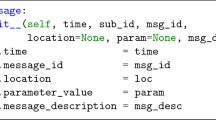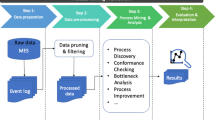Abstract
It is difficult for manufacturers of printed circuit boards (PCBs) to remain competitive because of the ever-increasing complexity of circuit board designs and processes that increase the product cost while decreasing the product yield. It is particularly difficult to ensure high yields because the products are made through sequential nano-scale processes, and the quality of each process may be affected by the results of the upstream processes. This type of cumulative effect makes it difficult to determine the machines that introduce product faults. In this paper, we develop a data mining approach to which large amounts of trace data are inputted to infer fault-introducing machines in the form of a L ⇒ R rule, where R contains the fault type and L contains a machine sequence that is the primary cause of the fault type. We tested our approach with industrial lot trace data collected from a PCB manufacturing line with 33 machines and six fault types. From the work-site experiment, we found 26 composite rules that showed a significant cumulative effect. The average fault detection accuracy of the rules was 87.2%. In addition, we found 13 rules that affected more than one fault type.
Similar content being viewed by others
References
Shang, Y., Tsung, F., and Zou, C., “Statistical Process Control for Multistage Processes with Binary Outputs,” IIE Transactions, Vol. 45, No. 9, pp. 1008–1023, 2013.
Montgomery, D. C., “Introduction to Statistical Quality Control,” John Wiley & Sons, pp. 288–506, 2009.
Agrawal, R. and Srikant, R., “Fast Algorithms for Mining Association Rules,” Proc. of 20th International Conference on Very Large Data Bases, Vol. 1214, pp. 487–499, 1994.
Dunia, R., Qin, S. J., Edgar, T. F., and McAvoy, T. J., “Identification of Faulty Sensors using Principal Component Analysis,” AIChE Journal, Vol. 42, No. 10, pp. 2797–2812, 1996.
Yan, L., “A PCA-based PCM Data Analyzing Method for Diagnosing Process Failures,” IEEE Transactions on Semiconductor Manufacturing, Vol. 19, No. 4, pp. 404–410, 2006.
Cherry, G. A. and Qin, S. J., “Multiblock Principal Component Analysis based on a Combined Index for Semiconductor Fault Detection and Diagnosis,” IEEE Transactions on Semiconductor Manufacturing, Vol. 19, No. 2, pp. 159–172, 2006.
Ko, J. M., Hong, S. R., Choi, J. Y., and Kim, C. O., “Wafer-to-Wafer Process Fault Detection using Data Stream Mining Techniques,” Int. J. Precis. Eng. Manuf., Vol. 14, No. 1, pp. 103–113, 2013.
Goodlin, B. E., Boning, D. S., Sawin, H. H., and Wise, B. M., “Simultaneous Fault Detection and Classification for Semiconductor Manufacturing Tools,” Journal of the Electrochemical Society, Vol. 150, No. 12, pp. 778–784, 2003.
Hong, S. J., Lim, W. Y., Cheong, T., and May, G. S., “Fault Detection and Classification in Plasma Etch Equipment for Semiconductor Manufacturing-Diagnostics,” IEEE Transactions on Semiconductor Manufacturing, Vol. 25, No. 1, pp. 83–93, 2012.
Mahadevan, S. and Shah, S. L., “Fault Detection and Diagnosis in Process Data using One-Class Support Vector Machines,” Journal of Process Control, Vol. 19, No. 10, pp. 1627–1639, 2009.
He, Q. P. and Wang, J., “Fault Detection using the K-Nearest Neighbor Rule for Semiconductor Manufacturing Processes,” IEEE Transactions on Semiconductor Manufacturing, Vol. 20, No. 4, pp. 345–354, 2007.
Chen, F. L. and Liu, S. F., “A Neural-Network Approach to Recognize Defect Spatial Pattern in Semiconductor Fabrication,” IEEE Transactions on Semiconductor Manufacturing, Vol. 13, No. 3, pp. 366–373, 2000.
Jeong, S. H., Choi, D. H., and Jeong, M., “Feasibility Classification of New Design Points using Support Vector Machine Trained by Reduced Dataset,” Int. J. Precis. Eng. Manuf., Vol. 13, No. 5, pp. 739–746, 2012.
Ma, M. D., Wong, D. H., Jang, S. S., and Tseng, S. T., “Fault Detection based on Statistical Multivariate Analysis and Microarray Visualization,” IEEE Transactions on Industrial Informatics, Vol. 6, No. 1, pp. 18–24, 2010.
Chien, C. F., Wang, W. C., and Cheng, J. C., “Data Mining for Yield Enhancement in Semiconductor Manufacturing and an Empirical Study,” Expert Systems with Applications, Vol. 33, No. 1, pp. 192–198, 2007.
Koller, D. and Friedman, N., “Probabilistic Graphical Models: Principles and Techniques,” MIT press, pp. 783–785, 2009.
Yang, L. and Lee, J., “Bayesian Belief Network-based Approach for Diagnostics and Prognostics of Semiconductor Manufacturing Systems,” Robotics and Computer-Integrated Manufacturing, Vol. 28, No. 1, pp. 66–74, 2012.
Konishi, S. and Kitagawa, G., “Information Criteria and Statistical Modeling,” Springer, pp. 211, 2008.
Xiong, W., Cao, Y., and Liu, H., “Study of Bayesian Network Structure Learning,” Applied Mathematics and Information Sciences, Vol. 7, No. 1, pp. 49–54, 2013.
Boulesteix, A. L. and Strimmer, K., “Partial Least Squares: a Versatile Tool for the Analysis of High-Dimensional Genomic Data,” Briefings in Bioinformatics, Vol. 8, No. 1, pp. 32–44, 2007.
Haenlein, M. and Kaplan, A. M., “A Beginner’s Guide to Partial Least Squares Analysis,” Understanding Statistics, Vol. 3, No. 4, pp. 283–297, 2004.
Mehmood, T., Martens, H., Sæbø, S., Warringer, J., and Snipen, L., “A Partial Least Squares based Algorithm for Parsimonious Variable Selection,” Algorithms for Molecular Biology, Vol. 6, No. 1, pp. 27, 2011.
Han, J. and Kamber, M., “Data Mining, Southeast Asia Edition: Concepts and Techniques,” Morgan Kaufmann, pp. 227–248, 2006.
Chong, I. G. and Jun, C. H., “Performance of Some Variable Selection Methods when Multicollinearity is Present,” Chemometrics and Intelligent Laboratory Systems, Vol. 78, No. 1, pp. 103–112, 2005.
Author information
Authors and Affiliations
Corresponding author
Rights and permissions
About this article
Cite this article
Sim, H., Choi, D. & Kim, C.O. A data mining approach to the causal analysis of product faults in multi-stage PCB manufacturing. Int. J. Precis. Eng. Manuf. 15, 1563–1573 (2014). https://doi.org/10.1007/s12541-014-0505-8
Received:
Revised:
Accepted:
Published:
Issue Date:
DOI: https://doi.org/10.1007/s12541-014-0505-8




